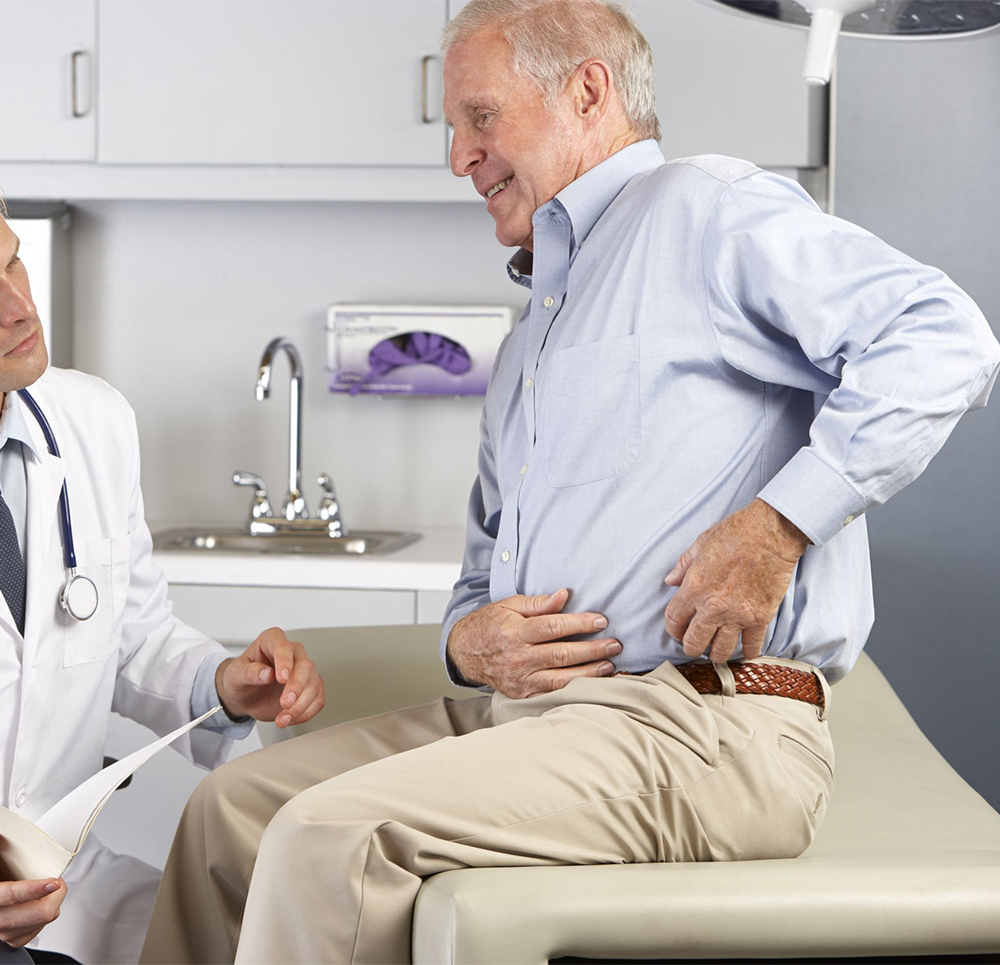Treatment for Hip Injuries & Arthritis in theFontana, CA. Area
When conservative treatments such as medication and physical therapy fail to bring pain relief and correcting the conditions like joint arthritis, muscle tear and bursitis, hip replacement surgery becomes the most common resort to treat severe hip conditions. The severity of going into surgery is life altering given the risks associated with surgery. That’s the reason doctors as well as patients try to counter the condition with all conservative measures possible.
Regenerative Medicine has made it possible to treat chronic hip conditions without taking the risk of surgery and heal quickly with no painful long term rehabilitation.
The Risks of Hip Surgery vs Regenerative Medicine
While once surgery could be considered a last resort, with advances in technology, it is now one of the major ways to treat chronic hip problems. The severity of going into surgery is life altering given the risks associated with surgery. Be it the invasive nature of surgery, the large incision, removal of cartilage and bone, alteration in the muscle tissue or the prosthetic metal implant, it bears huge risk of infection as well as long lasting consequences and agonizing rehabilitation tenure.
The recovery time that entails hospital stay after a hip surgery can be anywhere between 3to 10 days. Afterwards there is a long rehabilitation in the hospital, and later regular physical therapy at home as well as outpatient physical therapy. Varying from case to case, the complete recovery from the surgery can take from six months to more than a year long time.
The risk associated with Regenerative Medicine is very low as compared to surgery as the procedure requires very tiny incision to be made. No sutures are made in the process. The doctors suggest going easy on the hip joints for only the initial few days of taking the stem cell injection and not putting heavy weight on the treated joint. The stem cells accelerate the healing for the hip injury to make a faster recovery possible than ever before.
| CONDITIONS | REGNENERATIVE MEDICINE | HIP SURGERY |
|---|---|---|
| Blood Clots | No | Possible |
| Dislocations | No | Possible |
| Foreign Prosthetic | No | Yes |
| Fractures | No | Possible |
| Hospital Stay | No | 3 – 10 days |
| Infection | No | Possible |
| Joint Stiffening | Minimal Discomfort | Possible |
| Leg Length Change | No | Possible |
| Lost Time at Work | Yes | 3 months – 1 year |
| Prosthetic Breakdown | No | Yes |
| Recovery | Back to Normal After few days | 3 Month Period of No Walking |
| Re-Surgery | No | Possible – Very Likely |
The patient can leave the medical facility at the same day after the procedure. There is no need for overnight stay or hospital visits. The procedure itself is 2-4 hours long. Within 1 to 3 days of getting the injection, the patient can resume normal day to day activities.
Most patients feel better within a few days of the treatment whereas others feel the difference gradually over a span of many weeks. During the recovery phase, the stem cells keep growing healthy new tissue and repair the degenerated tissue for up to a whole year.
Dr. John Dimowo, a pain management specialist, uses Regenerative Medicine, to correct chronic hip conditions, and provide pain relief with an aim to thwart the need for surgery at the same time. He uses a high-tech musculo-skeletal ultrasound machine for the procedure to make sure the accuracy of Stem Cells placement.
The procedure of Regenerative medicine includes Stem cell therapy and sets in motion the body’s own regenerative mechanism.
Possible Hip Conditions Treated by Regenerative Medicine
Have you been diagnosed with one the following?
Joint Arthritis
Trochanteric bursitis
Iliopsoas bursitis
Labrum tear
Osteonecrosis of the femoral head
Iliopsoas / Iliotibia band tendonitis
Stem Cell Therapy
The procedure utilizes allogeneic adult stem cells that are processed at an FDA certified lab. It is non-controversial because the stem cells used in the procedure are not at all embryonic but are drawn but are drawn from young women giving birth via c-section. All donors are heavily screened for diseases and are under the age of 35.
The function of stem cells is very important in the body. They have the capability to transform into any tissue type for the body’s regenerative needs. If a person gets an injured hip, knee or shoulder, the stem cells surrounding the damaged area transform themselves into any kind of tissue that is required for recovery. The logic behind stem cells therapy is the same; we pump an added supply of stem cells to the affected hip area that accelerates the body’s ongoing natural repair and this way the injured tissue recovers fast.
Therefore, the hip heals much quicker and is relieved from all its pain with chance to cure the hip condition completely without surgery. In the procedure, a sample of the patient’s own stem cells are drawn from their body and re-injected in the injured area.
Why is This a Better Option?
Regenerative Medicine can heal chronic hip pain once and for all creating a possibility where each hip movement will be pain free. Being non-invasive and non-surgical with promising results, it is worth trying as it gives you a chance to avoid a painful rehabilitation process and the life altering impacts like a metal prosthetic implant and unvarying soreness.
Disclaimer: It is essential to recognize that every individual is unique and so are their medical conditions and healing process. Although there are no guarantees for recovery, Regenerative medicine procedures have a track record of helping many patients with joint arthritis, and joint and tendon injuries.

